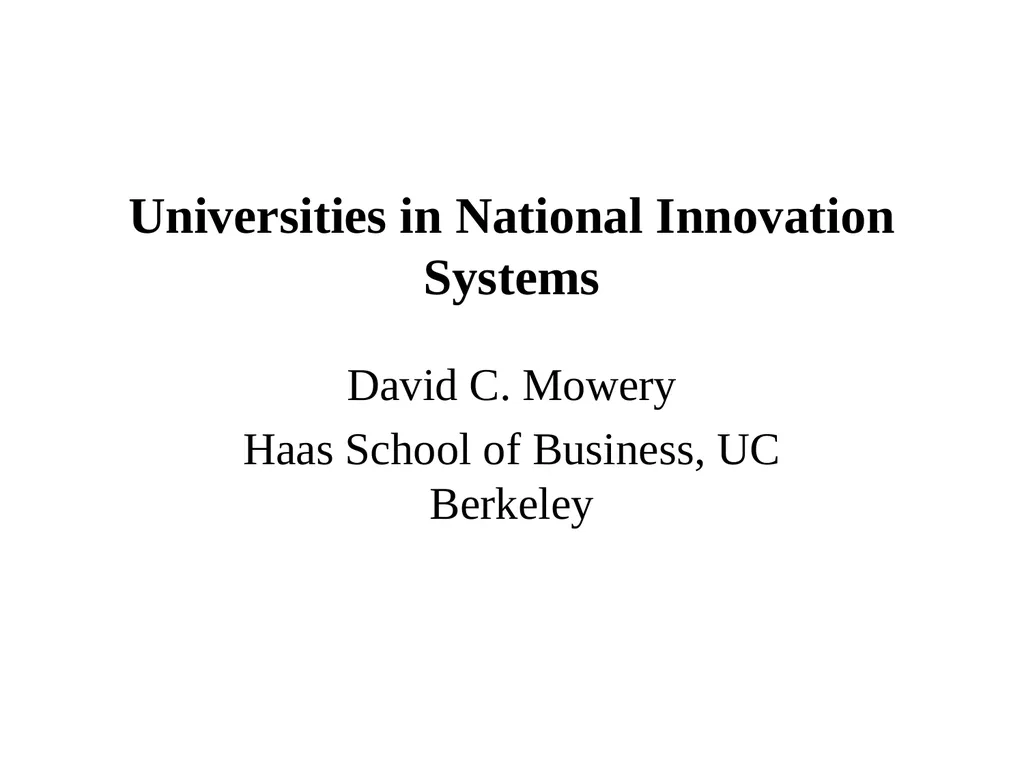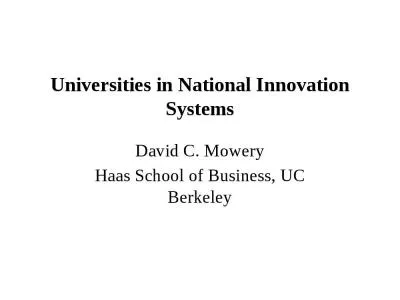
Author : aaron | Published Date : 2025-06-23
Description: Universities in National Innovation Systems David C. Mowery Haas School of Business, UC Berkeley Outline Universities and industrial innovation in knowledge-based economies. Cross-national indicators on the structure of national higherDownload Presentation The PPT/PDF document "" is the property of its rightful owner. Permission is granted to download and print the materials on this website for personal, non-commercial use only, and to display it on your personal computer provided you do not modify the materials and that you retain all copyright notices contained in the materials. By downloading content from our website, you accept the terms of this agreement.
Here is the link to download the presentation.
"Universities in National Innovation Systems David"The content belongs to its owner. You may download and print it for personal use, without modification, and keep all copyright notices. By downloading, you agree to these terms.













